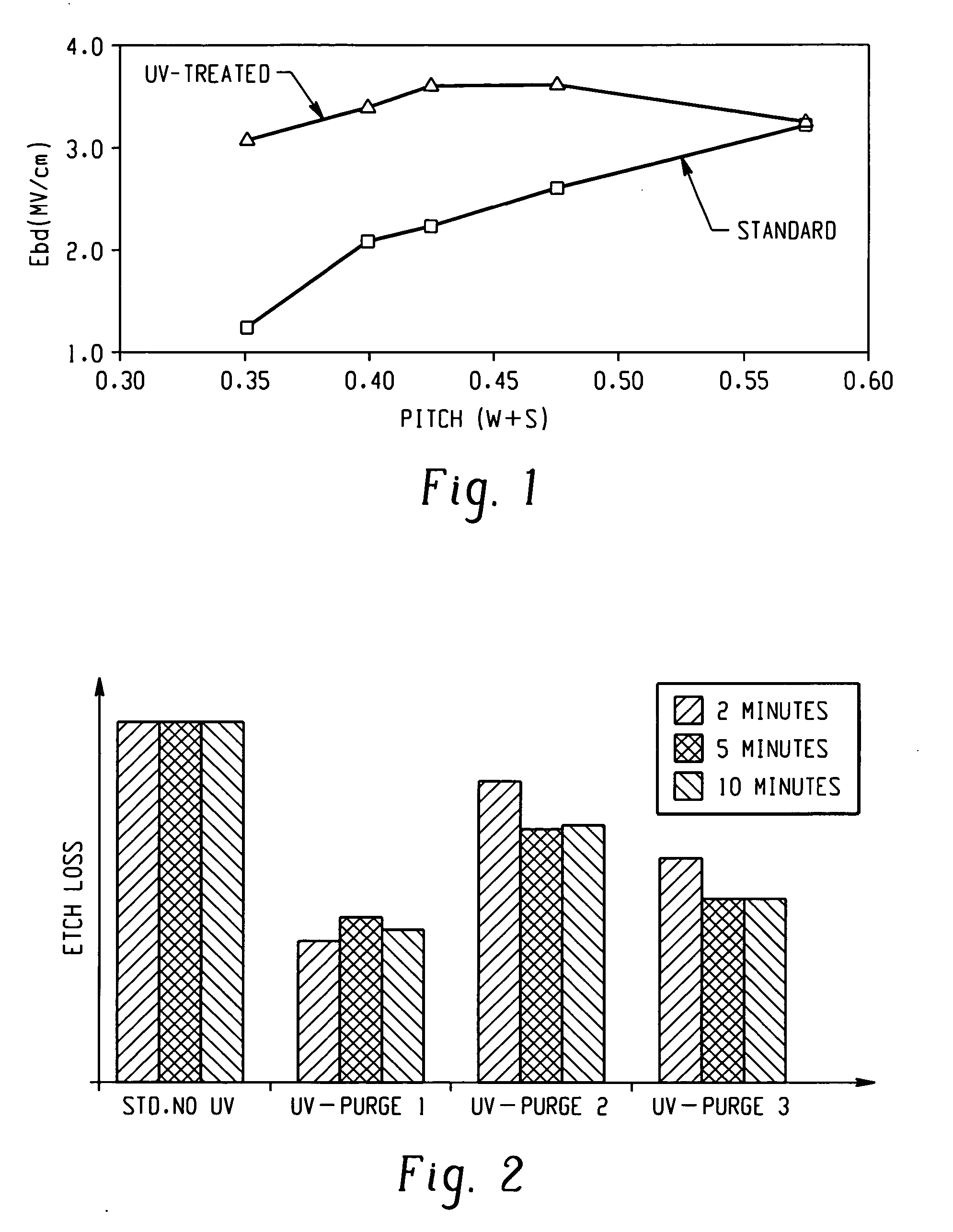Ultraviolet assisted pore sealing of porous low k dielectric films
a low-k dielectric film, ultra-violet technology, applied in the direction of coatings, metallic material coating processes, chemical vapor deposition coatings, etc., can solve the problems of affecting the dielectric constant, affecting the integration of porous low-k materials in the manufacture of semiconductor devices, and in general difficult to achiev
- Summary
- Abstract
- Description
- Claims
- Application Information
AI Technical Summary
Benefits of technology
Problems solved by technology
Method used
Image
Examples
example 1
[0042] In this Example, breakdown voltage as a function of pitch was measured before and after UV sealing the patterned porous dielectric material in accordance with the present disclosure. Both substrates were annealed. The line width was 175 microns. As shown in the FIG. 1, a significant improvement in the breakdown field was observed for the dense array.
example 2
[0043] In this Example, substrates having deposited thereon a porous dielectric material were exposed to a dilute hydrofluoric acid wet etching process for different periods of time. The substrates were exposed to UV radiation in accordance with the present disclosure in an inert environment (purge-1), a reducing environment (purge-2), or an oxidizing environment (purge-3). A control was exposed to the wet etch process without any exposure to UV. The results are shown in FIG. 2, which clearly show an increase in wet etch resistance upon exposure to the UV radiation as well as a dependence on the environment in which the UV exposure occurred.
PUM
| Property | Measurement | Unit |
|---|---|---|
| wavelengths | aaaaa | aaaaa |
| wavelengths | aaaaa | aaaaa |
| depth | aaaaa | aaaaa |
Abstract
Description
Claims
Application Information
 Login to View More
Login to View More - R&D
- Intellectual Property
- Life Sciences
- Materials
- Tech Scout
- Unparalleled Data Quality
- Higher Quality Content
- 60% Fewer Hallucinations
Browse by: Latest US Patents, China's latest patents, Technical Efficacy Thesaurus, Application Domain, Technology Topic, Popular Technical Reports.
© 2025 PatSnap. All rights reserved.Legal|Privacy policy|Modern Slavery Act Transparency Statement|Sitemap|About US| Contact US: help@patsnap.com


